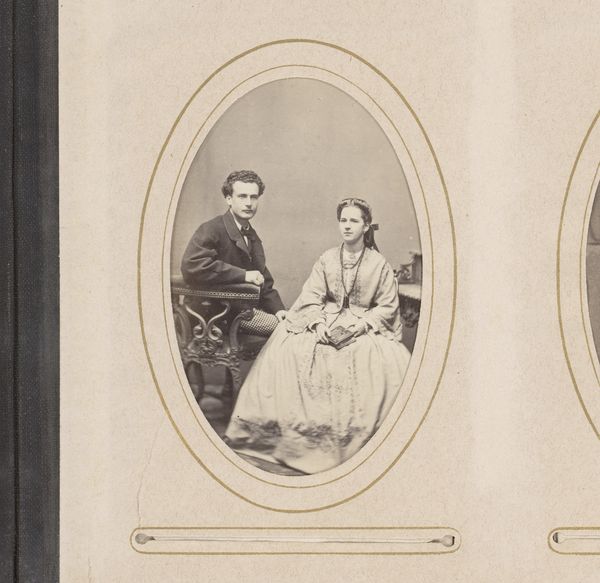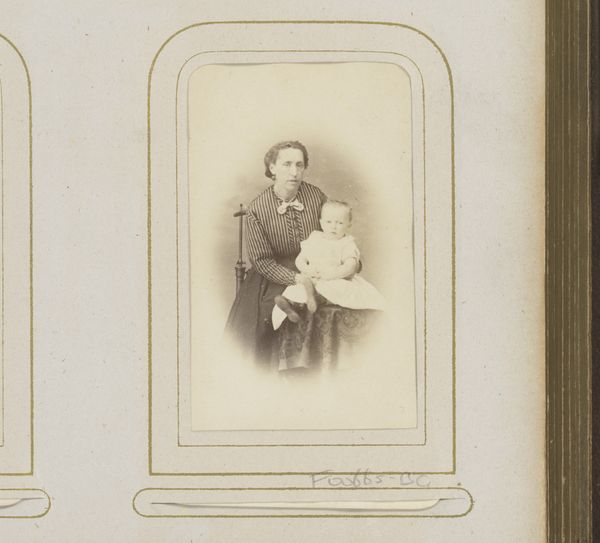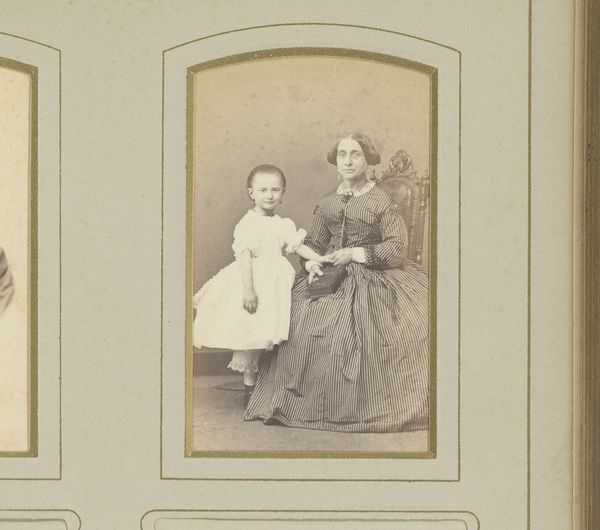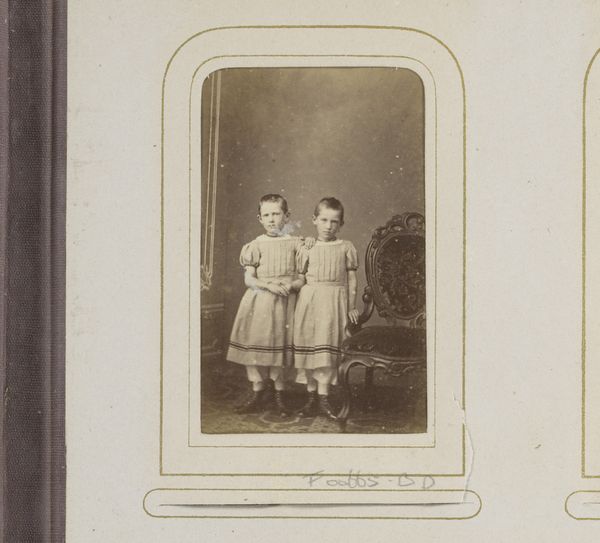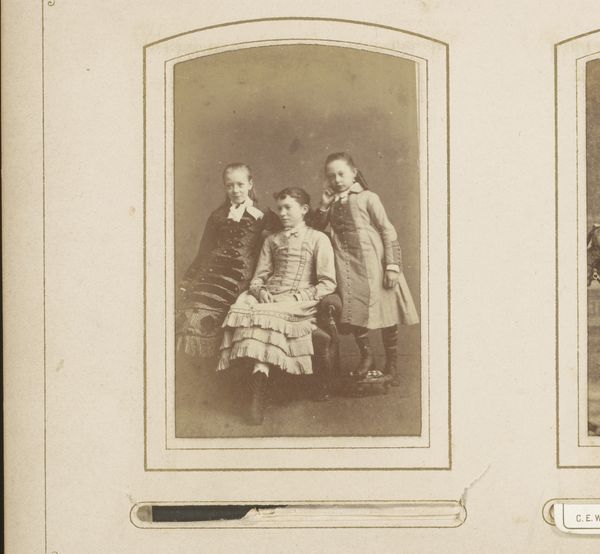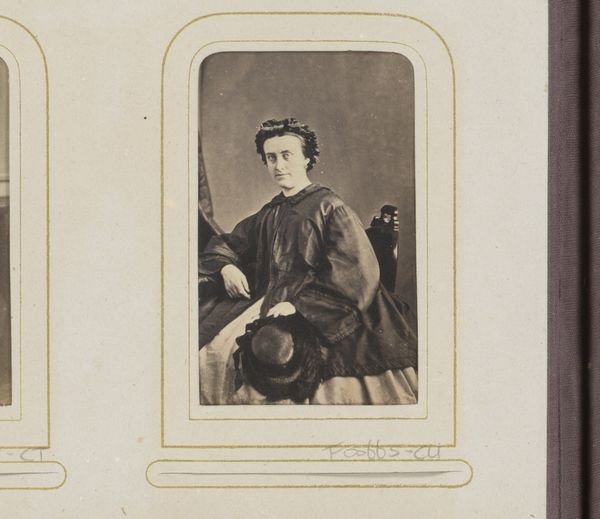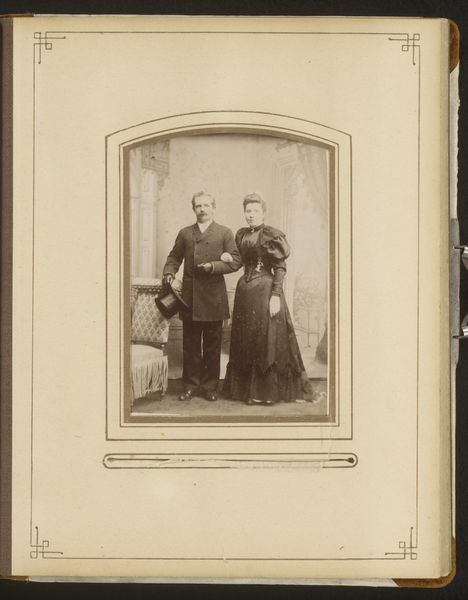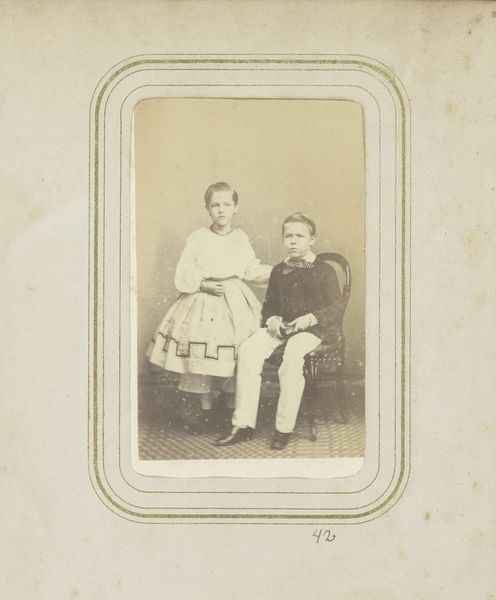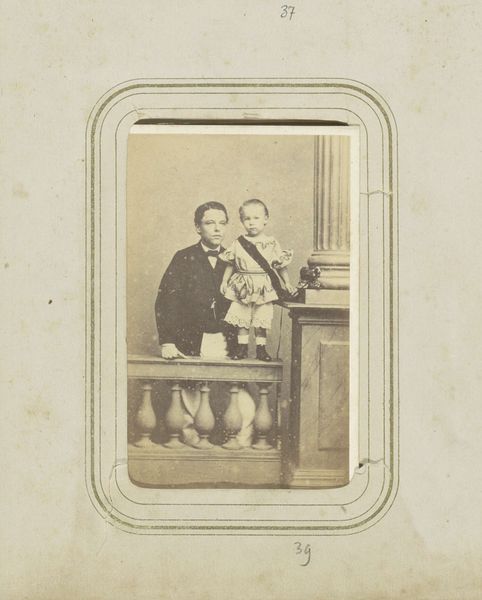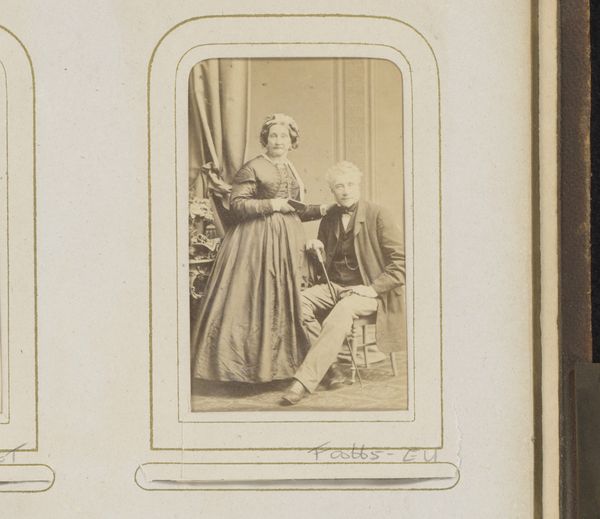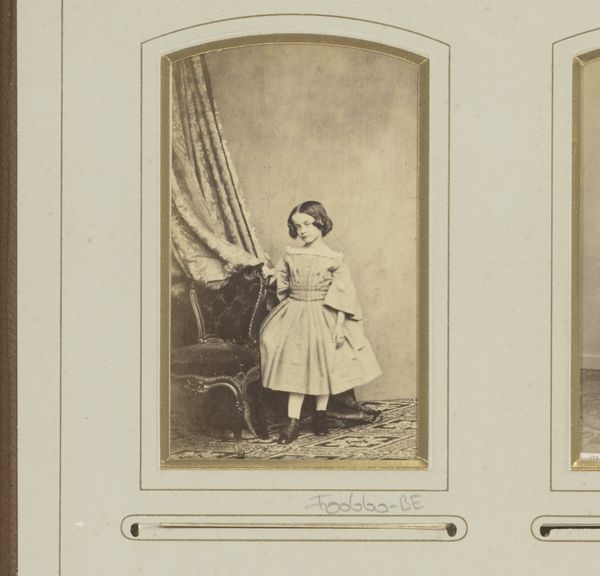
photography
#
beige
#
portrait
#
aged paper
#
toned paper
#
vintage
#
mother
#
photo restoration
#
archive photography
#
photography
#
historical photography
#
old-timey
#
group-portraits
#
yellow element
#
19th century
#
genre-painting
Dimensions: height 82 mm, width 50 mm
Copyright: Rijks Museum: Open Domain
Curator: Let’s take a look at this rather evocative piece; a photograph entitled “Portret van moeder met kind,” which we believe was created sometime between 1860 and 1880 by Roelof Loots. Editor: The first thing I notice is its stillness. Not just because it's a posed photograph, but the lack of ostentation in the dress. A sense of labor in a way, captured within. Curator: Exactly. It is imbued with the feeling of a specific era, a palpable weight of societal expectations pressing down. Note the detail – her hand resting on his; an offering, or perhaps a form of restraint. The composition is remarkable. I wonder if the "toned paper," contributes to that melancholic effect? Editor: I'm immediately thinking of the technical limitations – the exposure times, the unwieldy equipment – how those affected not just the photograph itself, but also the emotional register the subjects felt in that moment. They are workers creating their own image! But whose vision is at work in its production? Curator: Good point! Consider the social conditions that made these formal portraits so important. The aspirational rise of a merchant class maybe? This image captures the mother's fierce protectiveness. Notice the plain backdrop. There is this quiet fortitude etched into their faces...Do you think the boy understands the performance? Editor: Probably not entirely. But even his posture speaks volumes about a child growing up quickly. We often forget, photography in this period demanded real labour, on both sides of the lens. Its "realism" comes at the cost of this enforced static pose. I am also considering whether those old photography studios, in the latter half of the 19th century, served a crucial democratising function by letting new layers of the middle class represent themselves. Curator: It's true, Roelof Loots might've provided ordinary families this kind of extraordinary opportunity. Think about their hopes. How would their image reflect who they were, or who they hoped to become. Maybe we’re really seeing here is a mirror to ourselves. Editor: In a way, yes. In examining the materials and process, the tangible things behind its making, this object offers us a clear window into the social mechanics of that world and our own. A moment caught.
Comments
No comments
Be the first to comment and join the conversation on the ultimate creative platform.
